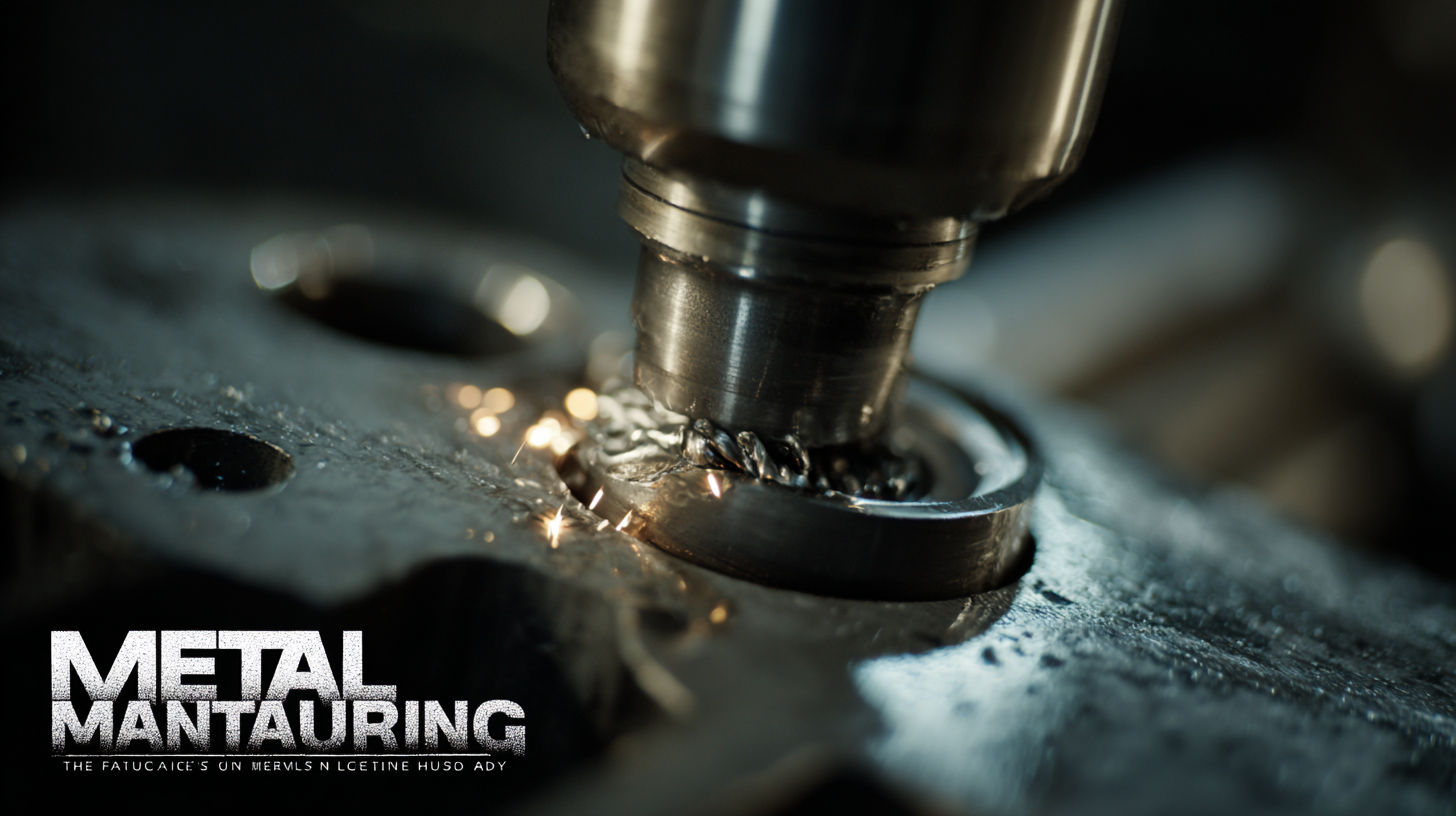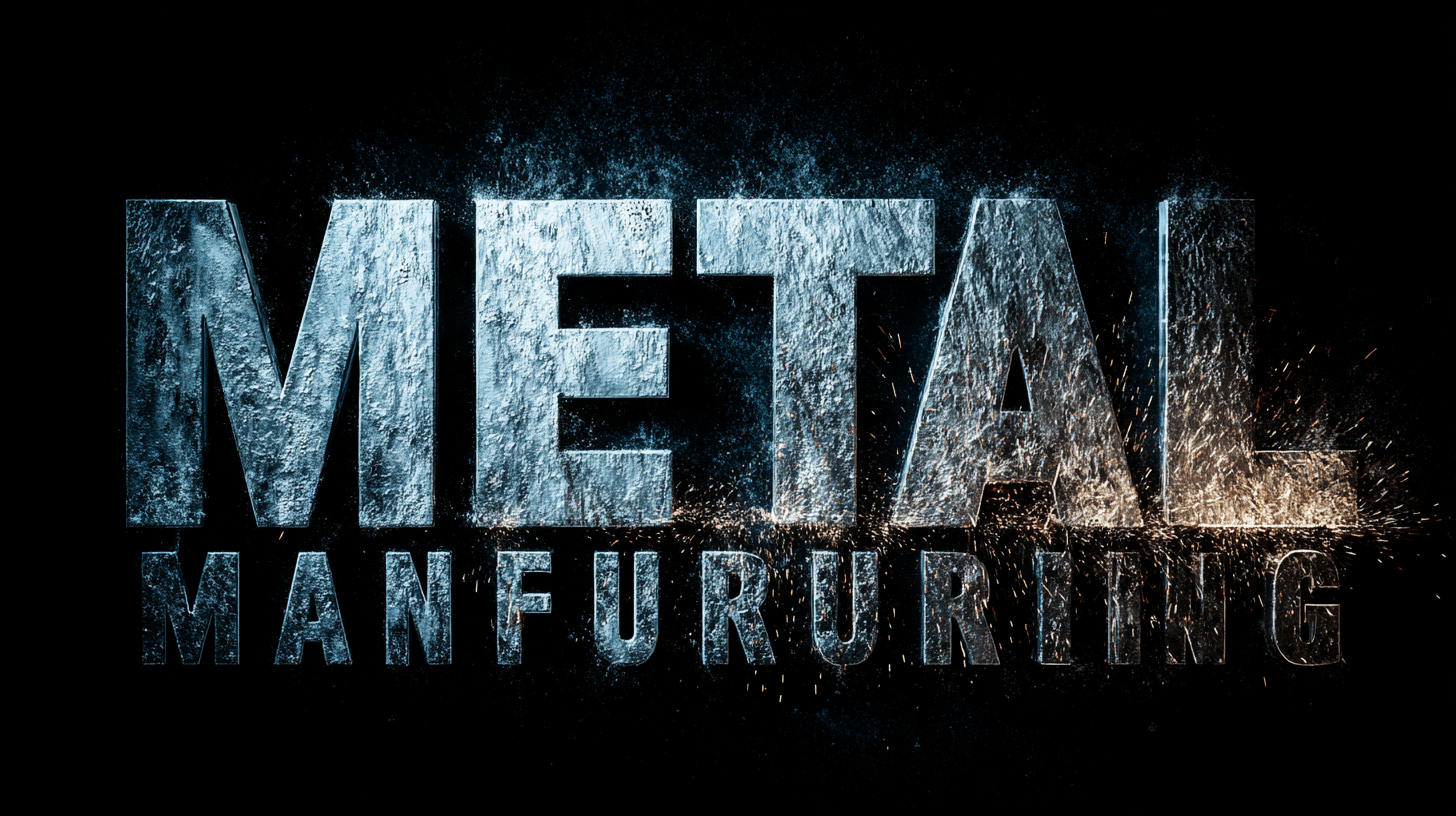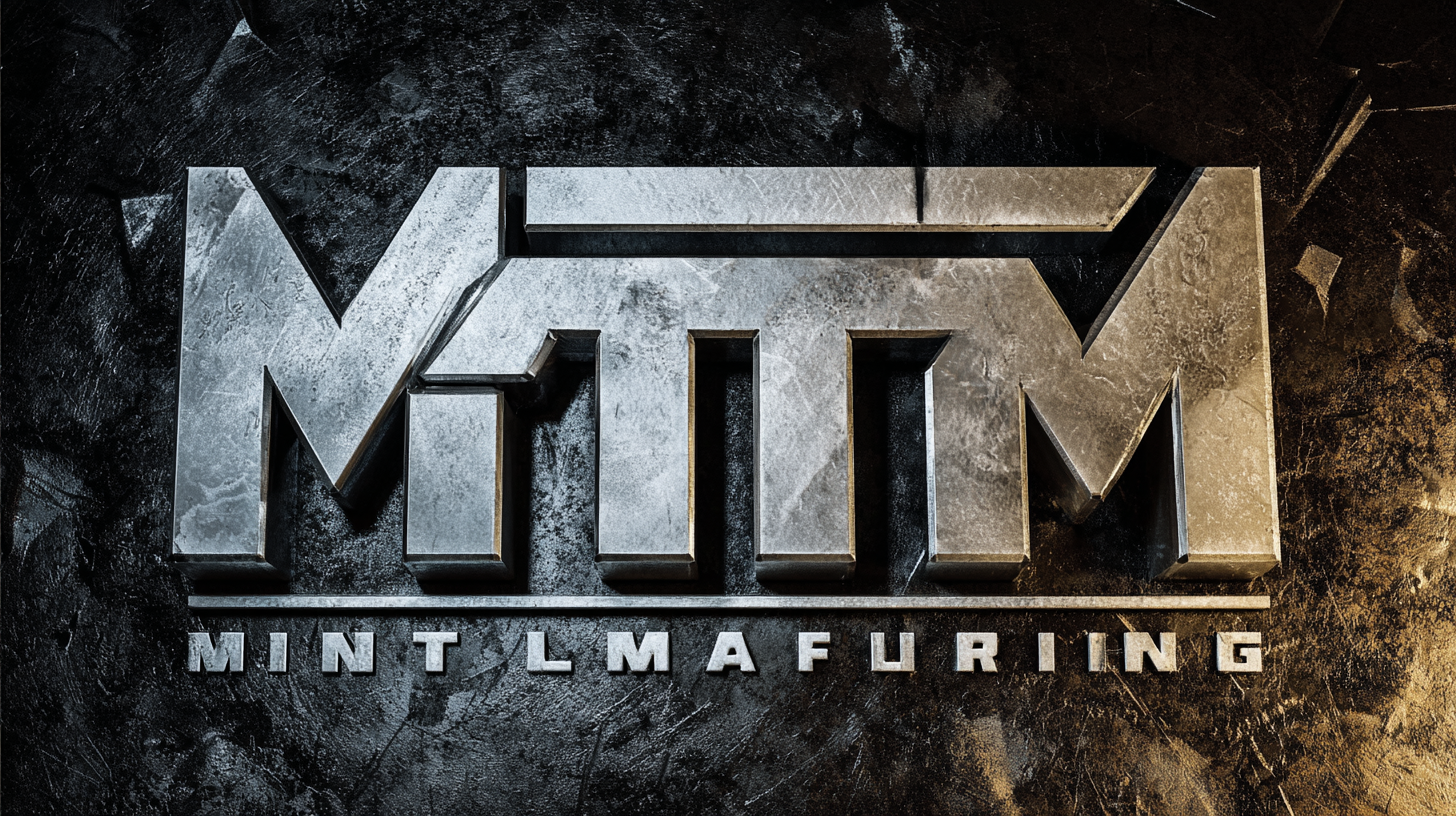As the world progresses towards a more technologically advanced future, the landscape of metal manufacturing is evolving rapidly, offering exciting innovations that cater to the needs of global buyers. Choosing a high-quality manufacturer is critical in this dynamic environment, where precision, durability, and efficiency are paramount. This blog aims to guide you through the essential strategies and considerations for selecting the right metal manufacturing partner. From understanding the latest advancements in materials and processes to assessing certifications and capacities, we will provide actionable insights to help you navigate the complex market. Ultimately, harnessing these innovations will not only enhance product quality but also improve supply chain resilience and sustainability in your operations. Join us as we explore the future of metal manufacturing and empower your purchasing decisions.

The landscape of metal manufacturing is undergoing a transformative revolution, driven by innovative technologies that are redefining production processes. Among these advancements, 3D printing stands at the forefront, enabling manufacturers to create complex and customized metal components with unprecedented efficiency.
According to market reports, the global market for additive manufacturing within the aerospace sector is set to grow from
$1.2 billion in 2023 to an impressive
$3.8 billion by 2030. This exponential growth signifies the increasing adoption of additive techniques in producing lightweight and robust aerospace components, showcasing the shift towards more sustainable and customizable manufacturing.
Furthermore, the steelmaking industry is experiencing a paradigm shift with the introduction of low-carbon production methods. Emerging technologies focusing on "green steel" have the potential to significantly reduce emissions associated with traditional steel production, which is one of the largest industrial sources of carbon footprints. Such innovations not only contribute to environmental sustainability but also align with global buyers' demand for greener products, paving the way for a more responsible and efficient metal manufacturing sector.
The integration of artificial intelligence into factory operations further enhances this transformation, optimizing production workflows, reducing waste, and driving overall efficiency in manufacturing processes.

The integration of automation and artificial intelligence (AI) into metal manufacturing is revolutionizing production efficiency and cost management. By harnessing advanced technologies, manufacturers can streamline operations, reduce human error, and optimize resource allocation. Automation systems can operate around the clock, ensuring consistent production rates and minimizing downtime. AI algorithms can analyze vast amounts of data in real-time, allowing for predictive maintenance and swift adjustments to production processes.
Tip: Embrace AI-driven data analytics to gain actionable insights into production performance. Regularly review these insights to make informed decisions that enhance operational efficiency and reduce waste.
Moreover, automation allows for high precision in metalworking, which not only improves the quality of the output but also cuts down on material costs. With robotic systems performing intricate tasks, manufacturers can achieve tighter tolerances and reduce scrap rates. This shift not only represents a leap in technology but also paves the way for sustainable practices within the industry.
Tip: Invest in state-of-the-art robotic systems that can adapt to changing production needs, offering scalability and flexibility. This investment can significantly improve long-term profitability and responsiveness to market demands.
As the demand for metals continues to rise, the environmental impacts associated with their production become increasingly critical. The systematic review of metal production's future environmental consequences highlights significant challenges, particularly concerning aluminum and steel, which not only affect ecological balance but also pose health risks. Sustainable practices in metal manufacturing are no longer optional; they are essential to mitigate the potential increase in environmental degradation that could accompany higher demand.
Innovations like 3D printing, or additive manufacturing, are paving the way for sustainable practices by significantly reducing waste and energy consumption. This technology not only enhances efficiency but also minimizes the carbon footprint associated with traditional manufacturing processes. Furthermore, ongoing assessments in the steel industry show a commitment to improving energy use and cutting carbon dioxide emissions, reflecting a larger trend toward environmental responsibility within the sector. As industries face rising regulatory pressures around Environmental, Social, and Governance (ESG) criteria, the integration of sustainable methods into metal manufacturing will be a vital step in addressing these growing environmental concerns and ensuring a healthier future for our planet.

As global buyers navigate the evolving landscape of metal manufacturing, emerging markets present unparalleled opportunities. Countries like India, Vietnam, and Brazil are rapidly enhancing their production capabilities, adopting advanced technologies, and offering cost-effective solutions. These markets not only provide competitive pricing but also access to unique resources that can enhance product quality and innovation.
When exploring these regions, it's essential for global buyers to conduct thorough market research. Tip: Evaluate the local supply chains and manufacturing processes to ensure they meet international quality standards. Building relationships with local suppliers can also lead to more favorable terms and insights into regional trends.
Moreover, sustainability is becoming a key factor in metal manufacturing. Many emerging markets are investing in eco-friendly practices, which can align with global buyers' growing emphasis on responsible sourcing. Tip: Look for manufacturers who prioritize green technologies and sustainable practices, as they can provide a vital edge in meeting consumer demand for environmentally conscious products. By leveraging these insights, global buyers can make informed decisions, tapping into the potential of emerging markets while maintaining high standards.
The advancement of additive manufacturing is revolutionizing metal parts production, with significant implications for global buyers seeking efficiency and customization. According to a report by Wohlers Associates, the global additive manufacturing market is projected to reach $35.6 billion by 2024, reflecting an annual growth rate of over 25%. This surge is largely driven by the ability of additive processes, such as 3D printing, to create complex geometries that traditional manufacturing methods struggle to achieve. For instance, companies can now produce lightweight, yet robust structures that significantly enhance performance in industries ranging from aerospace to automotive.
Moreover, the integration of advanced materials, such as titanium and aluminum alloys, into additive manufacturing processes has opened new avenues for innovation. A study by the Boston Consulting Group highlights that about 30% of metal parts used in industrial applications could be produced via additive manufacturing by 2030. This shift is expected to reduce waste and lead times, as well as improve energy efficiency. As more businesses embrace these technologies, it is imperative for global buyers to stay informed about the latest trends and embrace the transformative potential of additive manufacturing to remain competitive in an ever-evolving market.




